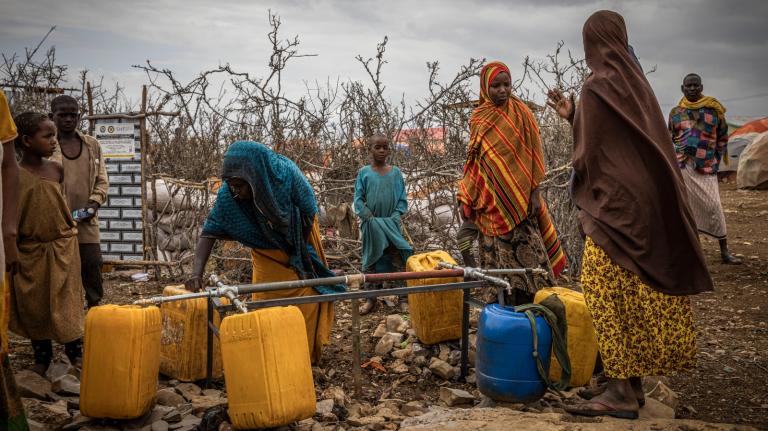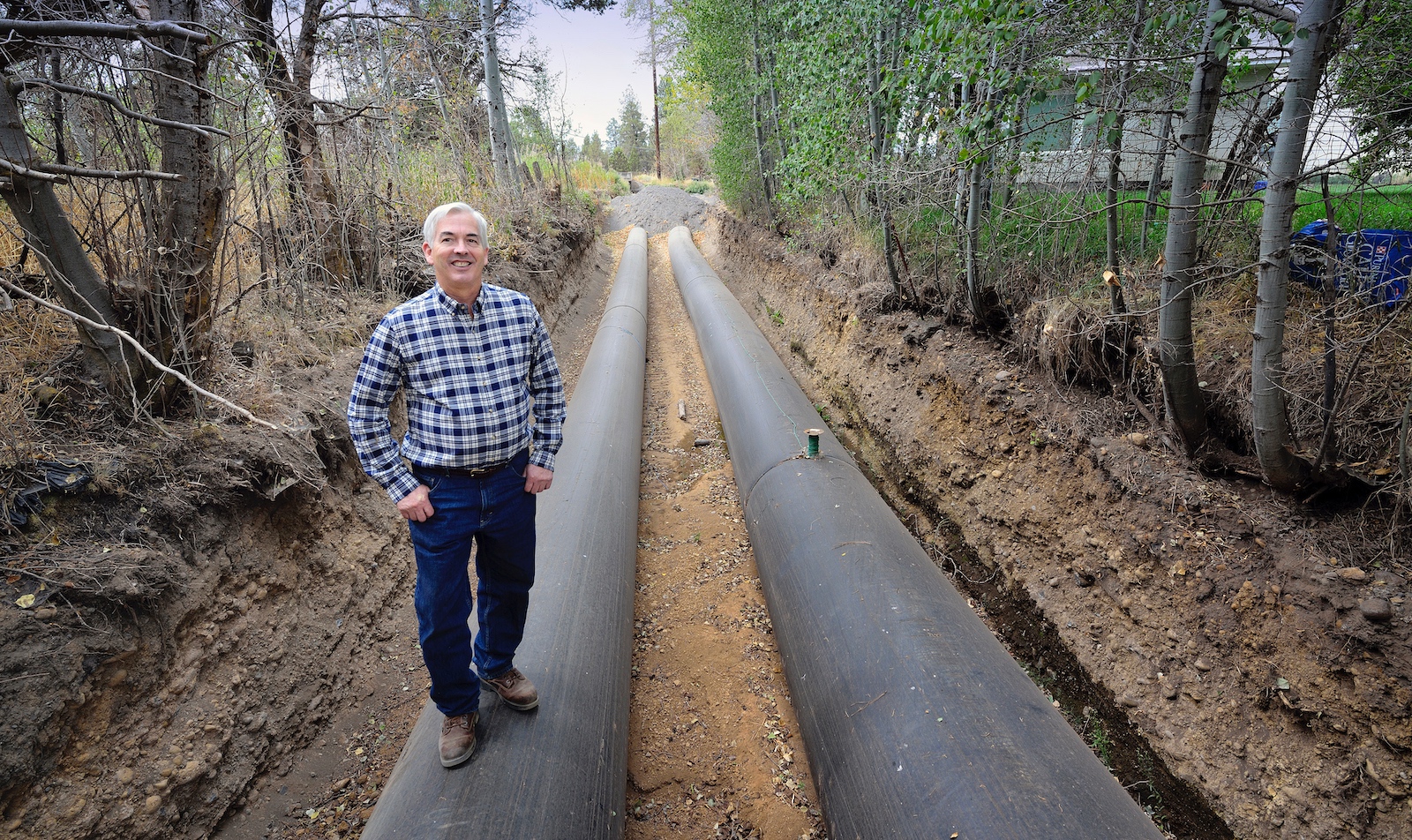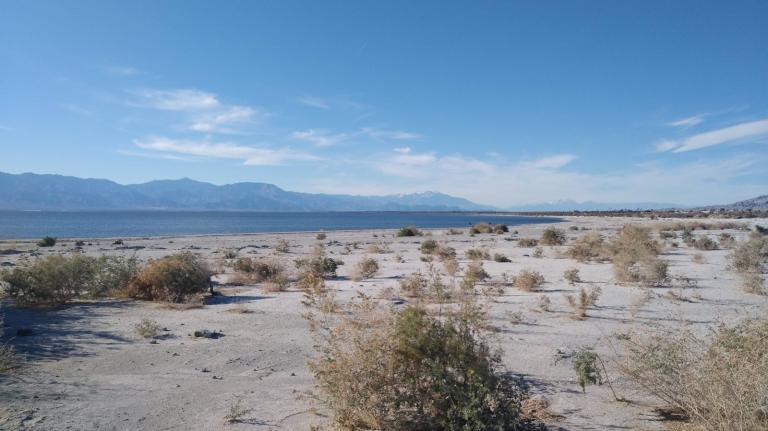In the desert of central Oregon, east of the Cascade mountains, farmers have been working the arid soil for more than a hundred years. They were lured to the area by turn-of-the-century infrastructure projects — a network of open-air canals carved into the landscape that would carry water from the Deschutes River to their fields for irrigation.
But as the Western megadrought sucks more and more water out of these channels, farmers and water managers across this part of Oregon are struggling. Though still effective at delivering water, these century-old systems are highly inefficient. Central Oregon’s soil is sandy and porous. For every gallon of water diverted, upwards of 50 percent can seep into the ground or else evaporate into a sky made increasingly thirsty by rising global temperatures.
“You more or less have to double the amount of water you take out of the river, because you lose half of it going down this ditch,” said Steve Johnson, manager of the Arnold Irrigation District, southeast of Bend, Oregon.
Now, central Oregon’s irrigation districts are racing to implement a relatively simple, but expensive solution to save water — one that also has the potential to create a new source of clean electricity. All they have to do is turn their ditches into pipes.
“Wherever you have irrigation operations, there’s this opportunity,” said Johnson. “Each district is going to be a little bit different, each state’s going to be a little bit different, but generally, the principal’s the same. You have 100-year-old infrastructure that needs to be modernized.”
For Johnson and his neighboring districts, irrigation modernization has primarily meant one thing: converting open-air irrigation ditches into pipelines. After about five years of conducting technical studies, environmental assessments, and developing engineering plans, the Arnold Irrigation District is going to start replacing 12 miles of its primary canal with a pipeline later this year. The project is expected to save 11,083 acre-feet of water per year, or enough to fill more than 5,500 olympic-sized swimming pools.
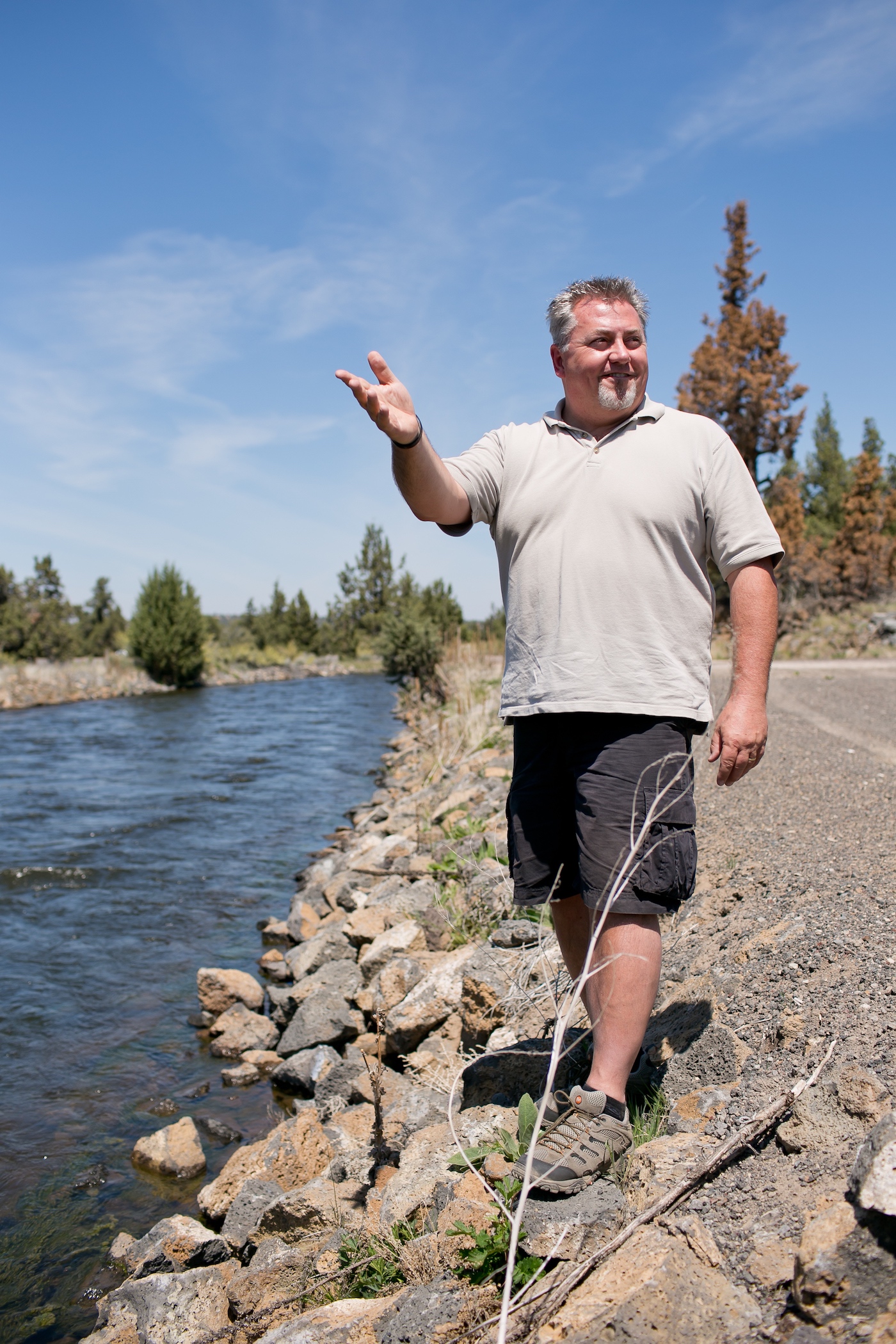
In the neighboring Three Sisters Irrigation District, which spent the last two decades converting more than 90 percent of its canals to pipelines, the benefits are clear.
Three Sisters now reports saving 110 acre-feet of water per day during irrigation season, which is enough to fill 55 olympic-sized swimming pools every day. “We haven’t had to do what other places have done, which is either turn the water off entirely, or turn the water off every other week,” said Sarahlee Lawrence, an organic farmer in the district.
Because of those savings, water managers are able to keep more water in the Whychus Creek, which supplies the district. “Not too many years ago, it would run dry during the irrigation season, and this is important habitat for salmon and trout,” said Dave Moldal, senior program manager at the Energy Trust, an Oregon-based nonprofit that is helping to fund similar projects around the state. “Now because of irrigation modernization, it flows year round.”
In Three Sisters, the pipelines also helped the district and farmers cut energy costs, which is a key reason Moldal and the Energy Trust got involved. The nonprofit is funded with ratepayer fees collected by private utility companies, and exists to support energy efficiency and renewable energy projects in Oregon. Because the Whychus Creek flows at a higher elevation than the farms in the Three Sisters district, as the water flows downhill, it becomes pressurized. That means that farmers who used to have to pump water out of their ditches can just tap into the pipeline, eliminating a major energy expense. Lawrence said she is saving thousands of dollars on electricity.
The Energy Trust is also helping irrigation districts pursue a second opportunity — installing small hydroelectric turbines inside of these pressurized water pipelines that generate power. The nonprofit has supported three hydropower projects in Three Sisters, which are expected to produce about 4 million kilowatt-hours of electricity per year, or enough to power about 370 homes.
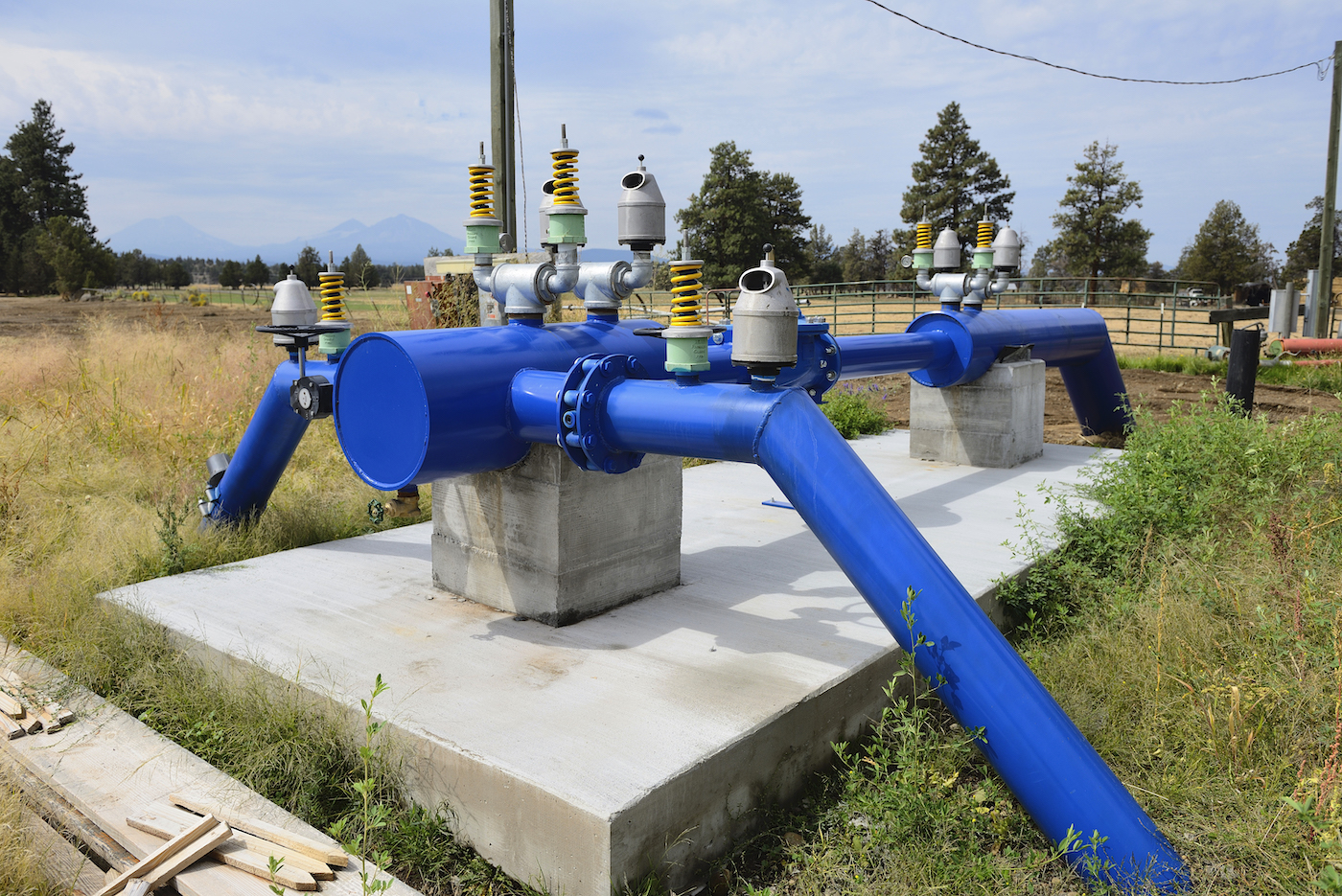
Moldal said that the ability to develop in-conduit hydropower depends on two factors. The first is geography. If there’s not enough of a drop in elevation between where the water is diverted and where it’s used, there won’t be enough pressure in the pipes to generate electricity. The second is economics. In Oregon, the electricity generated by these small turbines doesn’t command a high enough price on the energy market to cover the costs. Energy Trust is paying these small hydro producers the difference, because part of its mandate is to support the development of renewable energy.
“The physics of it only gets you halfway,” said Moldal. “You also have to have an energy market that works.”
There are thousands of miles of irrigation canals across the west that are ripe for modernization. While pipelines may be an option in many areas, they aren’t the only solution. In central California, the Turlock Irrigation District recently announced a pilot project to cover part of its canal system with solar panels, which will reduce evaporation and generate clean energy. Some districts have looked to lining their canals with impervious materials, like concrete, to prevent seepage. But in a 2019 survey of irrigation districts, respondents reported that about 72 percent of their canals remain unlined. Cost was the most frequently cited reason.

With help from the Energy Trust and other funders, the Arnold Irrigation District has already spent close to $150,000 on preliminary plans and reports required before it could start construction on its new system. The 12 miles of pipeline are expected to cost another $35 million — $26 million of which will be covered by federal funding through the Department of Agriculture’s Watershed Protection and Flood Prevention Program.
But Johnson said that today, with new infusions of government money from last year’s Infrastructure and Investment Jobs Act, and the recent Inflation Reduction Act, there’s an opportunity to accelerate this work around the country.
For Johnson, a lot is riding on the new pipeline. His district has had to turn off water to farmers in late July or early August for the past three years instead of letting it flow through to October. The scarcity of water has driven up the price of hay, causing livestock farmers to sell off some of their herds. “If you don’t modernize, if you don’t start improving the system, then that’s gradually what’s going to happen for most of the people that live in your irrigation district,” said Johnson. “It’s all gonna just start dwindling away.”
